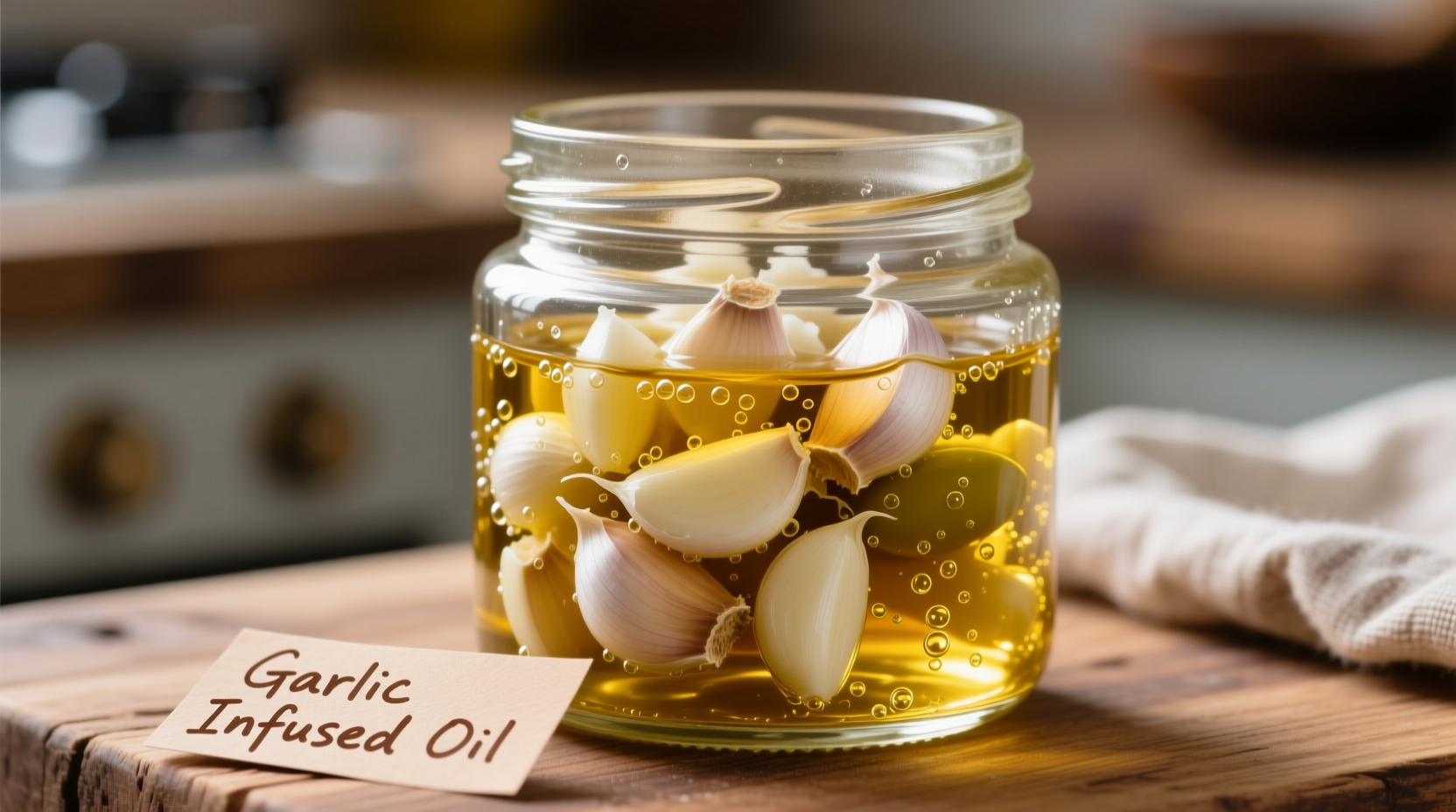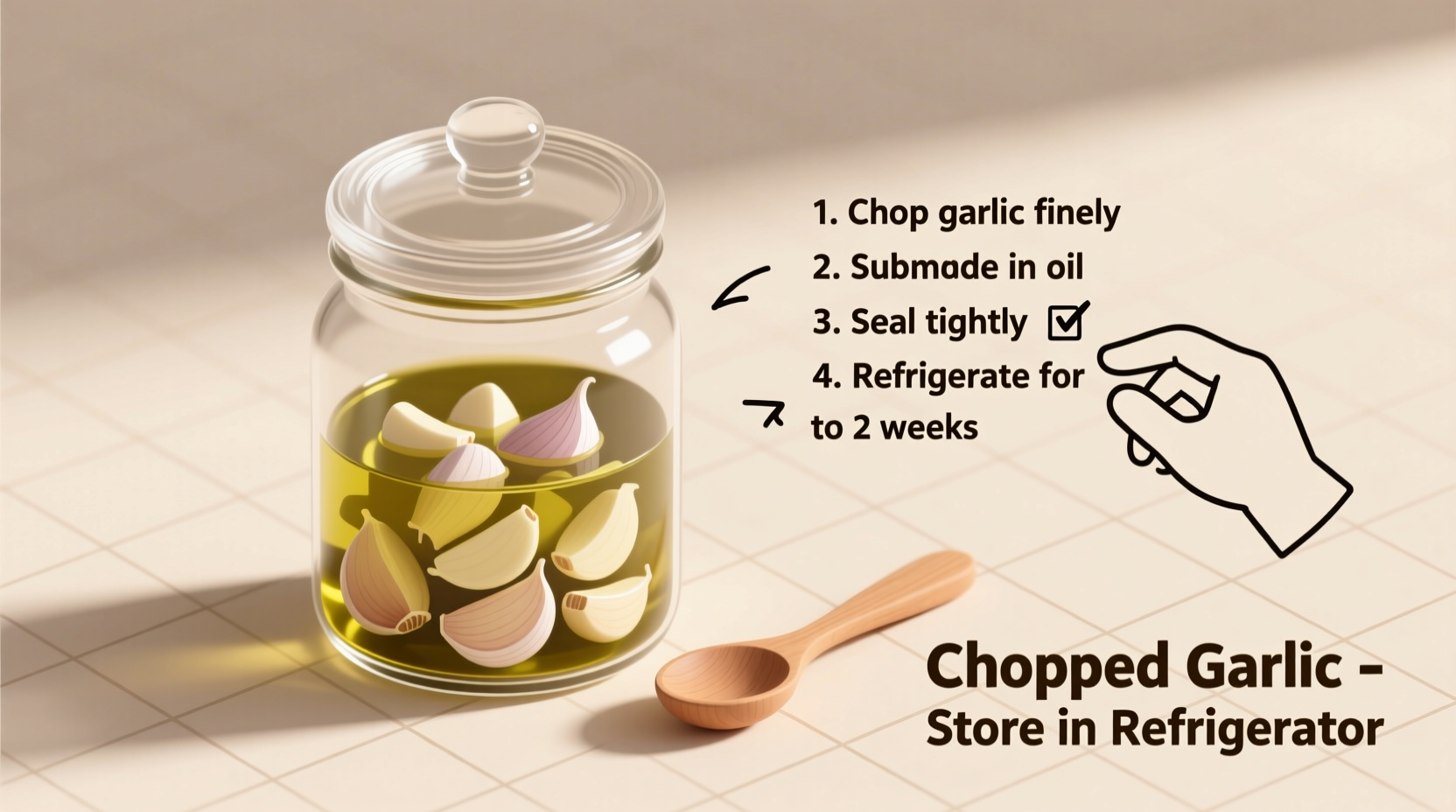Store chopped garlic properly by placing it in an airtight container with a thin layer of olive oil, then refrigerate for up to 5 days. For longer storage, freeze in ice cube trays with oil for up to 6 months. Never store plain chopped garlic in oil at room temperature due to botulism risk.
Chopped garlic loses its vibrant flavor and becomes vulnerable to spoilage within hours if not stored correctly. As a culinary professional who's worked with garlic across countless kitchens, I've seen how proper storage techniques can preserve that fresh, pungent quality while preventing food safety hazards. This guide delivers exactly what you need: practical, science-backed methods to extend your chopped garlic's shelf life while maintaining maximum flavor and safety.
Why Proper Garlic Storage Matters
When you chop garlic, you rupture its cell walls, releasing enzymes that create that characteristic pungent aroma but also accelerate spoilage. According to USDA food safety guidelines, chopped garlic enters the "temperature danger zone" (40°F-140°F) where bacteria multiply rapidly if left at room temperature. Improper storage doesn't just waste money—it creates potential food safety risks, particularly with oil-based storage methods.
Immediate Storage: When You'll Use Garlic Within 24 Hours
If you've chopped garlic for immediate cooking but need to pause your preparation, follow these steps:
- Place chopped garlic in a small glass or ceramic container (avoid metal which reacts with garlic)
- Cover surface completely with a thin layer (about 1/8 inch) of olive oil
- Cover container tightly with plastic wrap or lid
- Refrigerate immediately
This method creates a protective barrier against oxygen exposure while the oil helps preserve flavor compounds. The USDA confirms that brief refrigeration with oil is safe when used within 24 hours.

Short-Term Storage: 2-7 Days of Freshness
For meal preppers who want chopped garlic ready for multiple recipes throughout the week, this refrigerator method delivers optimal results:
- Place chopped garlic in an airtight glass container
- Add just enough olive oil to coat the garlic (don't submerge completely)
- Press plastic wrap directly onto garlic surface before sealing container
- Store at 34-38°F (1-3°C) in the coldest part of your refrigerator
| Storage Method | Maximum Duration | Flavor Quality | Safety Notes |
|---|---|---|---|
| Refrigerator with oil | 5 days | Excellent (85-90% of fresh) | Must keep refrigerated at all times |
| Refrigerator dry | 2 days | Good (70-75% of fresh) | Higher spoilage risk, check daily |
| Room temperature with oil | NOT RECOMMENDED | N/A | Botulism risk after 4 hours |
This approach maintains garlic's allicin content—the compound responsible for both flavor and health benefits—while preventing oxidation. University of California food science research shows that proper refrigeration slows enzymatic degradation by 70% compared to room temperature storage.
Long-Term Storage: Preserving Garlic for Months
Freezing chopped garlic properly preserves both flavor and texture better than many realize. Here's the professional chef method:
Freezer Cubes Method (Best for Cooking Applications)
- Chop garlic finely and place in ice cube tray compartments
- Cover completely with high-quality olive oil
- Freeze until solid (about 4 hours)
- Transfer cubes to labeled freezer bags, removing all air
- Store at 0°F (-18°C) for up to 6 months
Vacuum-Sealed Freezer Method (Best for Raw Applications)
For dishes where you'll use garlic raw (like dressings), vacuum sealing without oil preserves the sharpest flavor:
- Spread chopped garlic in thin layer on parchment paper
- Flash freeze for 1 hour
- Vacuum seal in small portions
- Store at 0°F (-18°C) for up to 4 months
Food science research from the National Center for Home Food Preservation confirms that properly frozen garlic retains 95% of its flavor compounds when stored below 0°F. The key is minimizing air exposure during storage.
Critical Safety Considerations
Garlic stored improperly in oil creates ideal conditions for Clostridium botulinum bacteria growth. The FDA explicitly warns against storing garlic in oil at room temperature for more than 4 hours. Even refrigerated oil-stored garlic should be consumed within 5 days. Always follow these safety protocols:
- Never store plain chopped garlic in oil without refrigeration
- Discard if you notice any bubbling, cloudiness, or off odors
- Always use clean utensils when handling stored garlic
- Label containers with preparation date
How to Tell When Stored Garlic Has Spoiled
Garlic that's gone bad shows clear warning signs. Check for these indicators before use:
- Color change: Yellow or brown discoloration indicates oxidation
- Texture change: Slimy or mushy texture means bacterial growth
- Odor change: Sour or unpleasant smell instead of pungent aroma
- Mold: Any visible mold requires immediate disposal
When in doubt, throw it out—garlic is inexpensive compared to potential foodborne illness.
Common Storage Mistakes to Avoid
Even experienced cooks make these critical errors that compromise both flavor and safety:
- Using plastic containers: Garlic compounds react with plastic, creating off-flavors
- Storing in the original grocery bag: Allows moisture buildup and accelerates spoilage
- Adding salt before storage: Draws out moisture and creates bacterial growth conditions
- Keeping in the refrigerator door: Temperature fluctuations reduce shelf life by 40%
Maximizing Flavor in Stored Garlic
Professional chefs use these techniques to maintain that fresh-chopped quality:
- Add a small piece of uncut garlic clove to the container to refresh flavor
- Use filtered water instead of oil for raw applications (change water daily)
- Store near the back of the refrigerator where temperature is most stable
- Freeze in recipe-sized portions to avoid repeated thawing











 浙公网安备
33010002000092号
浙公网安备
33010002000092号 浙B2-20120091-4
浙B2-20120091-4